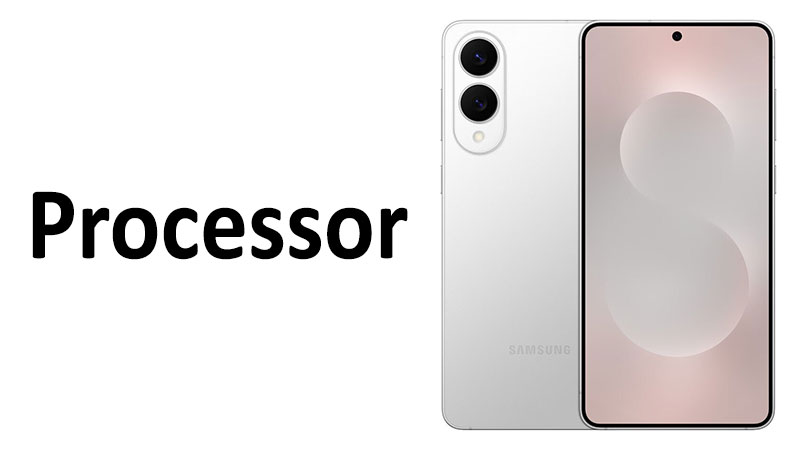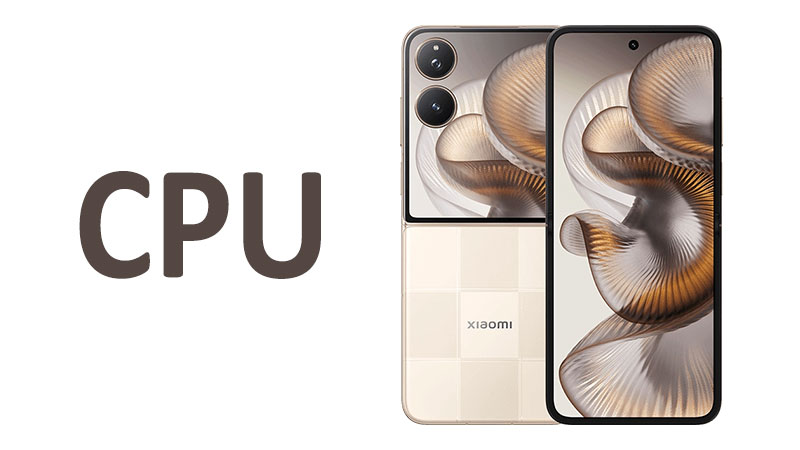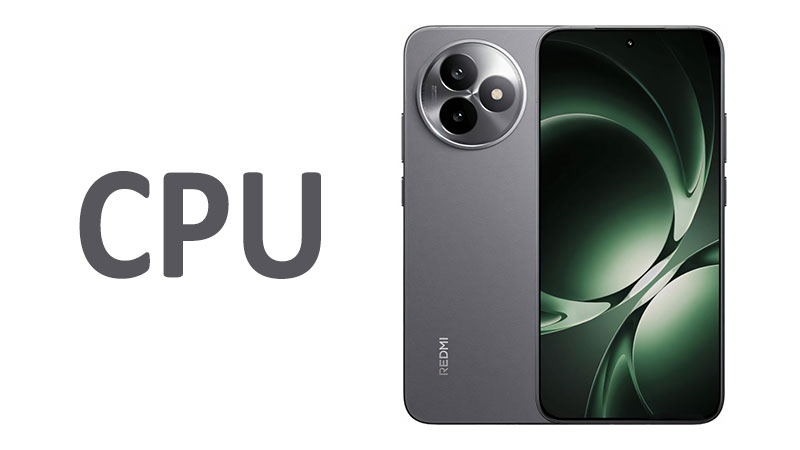The Samsung Galaxy S25 Edge processor is the heart of this highly anticipated device. This crucial component dictates everything from daily speed to intense gaming performance. It represents the single most vital piece of hardware on the phone. This article offers a comprehensive and deep review of the core chipset specifications. We will analyze the Qualcomm SM8750-AC Snapdragon 8 Elite. This processor is built on a cutting-edge 3 nanometer (3nm) architecture. Understanding its specifications is essential for any potential buyer. We will thoroughly cover the CPU core configuration and the powerful Adreno 830 GPU. Furthermore, we will compare its features to previous models and competitors. Our goal is to give you a complete technical and practical overview. This information helps you make an informed decision about this flagship smartphone.
Deep Dive into the Snapdragon 8 Elite Chipset (SM8750-AC)
The Qualcomm SM8750-AC Snapdragon 8 Elite is a marvel of silicon engineering. This name signifies a customized and highly optimized version of the chip. It is specifically designed for Samsung’s premier flagship devices. The “Elite” designation suggests targeted performance enhancements. It also hints at superior clock speeds over any standard variant. This customization ensures a perfect fit for the Galaxy S25 Edge.
The chipset is built using a cutting-edge 3 nanometer (3nm) fabrication process. This extremely small size is a key differentiator in mobile efficiency. A smaller process node allows more transistors to fit onto the processor die. Consequently, this density inherently boosts raw performance capabilities. Importantly, this also drastically reduces overall power consumption. This efficiency is crucial for all-day battery performance.
The shift to the 3nm node is one of the most significant generational upgrades. It translates directly into longer device usage times. Moreover, it allows for sustained peak performance under heavy load. The SM8750-AC designation confirms its place at the top tier. It positions the chipset at the absolute pinnacle of mobile computing technology. This powerful component manages every function of the Galaxy S25 Edge. It handles secure communication, processing, and all computational workloads.
This new architecture brings substantial advantages over the 4nm generation. For example, the performance per watt ratio is expected to improve noticeably. This means the phone can execute demanding tasks while generating less heat. Improved thermal management is critically important for demanding gaming. It is also vital for prolonged 8K video recording sessions. The Snapdragon 8 Elite must efficiently handle complex on-device AI tasks. It powers the next generation of artificial intelligence features. This includes advanced capabilities like real-time language translation. It also covers sophisticated photo and video optimization processing.
A potential buyer should clearly recognize the importance of the 3nm node. It provides significant future-proofing for the device. It ensures the Galaxy S25 Edge can competently handle new, demanding applications. This also extends the phone’s useful lifespan in a rapidly evolving technological landscape. The chipset represents a massive leap in core semiconductor technology. It establishes a powerful new standard for all future Android flagships. We anticipate unparalleled speed and efficiency from this highly advanced silicon.
The Oryon V2 Phoenix CPU Architecture
The central processing unit (CPU) acts as the brain and primary decision-maker of the chipset. The Samsung Galaxy S25 Edge utilizes an extremely advanced Octa-core configuration. This setup features Qualcomm’s custom-designed Oryon V2 Phoenix cores. The decision to use custom cores marks a crucial strategic shift for Qualcomm. It allows them to fine-tune performance specifically for complex mobile requirements. This advanced setup is logically organized into two distinct, specialized clusters.
The first core cluster handles all ultra-high-performance processing tasks. It consists of two powerful Oryon V2 Phoenix L cores. These large cores operate at an extreme peak clock speed of 4.47 GHz. This immense speed is specifically reserved for the most intensive workloads. These tasks include graphics-intensive gaming and complicated video rendering. This performance cluster provides the necessary raw, immediate power. It ensures zero lag and smooth operation when the device is fully stressed. The ‘L’ designation suggests a primary focus on leading-edge, high-frequency performance.
The second core cluster is dedicated entirely to efficiency and sustained usage. This part of the setup comprises six Oryon V2 Phoenix M cores. These medium-sized cores run at a maximum frequency of 3.53 GHz. They handle the vast majority of all daily tasks. These operations include web browsing, instant messaging, and running standard applications. This larger efficiency cluster ensures seamless multitasking. It also rigorously keeps power consumption low during normal everyday use. A highly intelligent scheduler shifts tasks seamlessly between the two clusters. This approach successfully maximizes both raw speed and battery efficiency simultaneously.
The overall architecture strongly emphasizes a crucial balance between immediate power and long-term device longevity. The combination of two high-speed cores and six efficiency cores is a highly strategic design choice. It allows the phone to sip power for most background tasks. However, it can instantly unleash massive computational power when required. Compared to previous processor generations, this setup is significantly more dynamic. It can adapt much better to diverse user scenarios in real-time. Older architectures often relied heavily on a single massive core. This new and improved design offers more granular, precise control over resource allocation.
The extremely high clock speed of 4.47 GHz is particularly notable in its design. It strongly indicates a substantial generational uplift in single-core performance metrics. Single-core speed is absolutely critical for quick application launch times. It also greatly affects the overall responsiveness of the user interface. This speed ensures that the Galaxy S25 Edge feels incredibly fast and responsive. The Oryon V2 Phoenix architecture aims directly to close the performance gap. It competes very fiercely with other leading flagship mobile CPUs available. Buyers will experience noticeably quicker app switching and rapid content loading.
Adreno 830 GPU Performance: Gaming and Graphics
The graphics processing unit (GPU) is a vital component for visual fidelity and gaming. The Samsung Galaxy S25 Edge is equipped with the powerful Adreno 830 GPU. This specific graphics processor operates at a very high peak clock frequency of 1200 MHz. This high clock speed represents a massive and significant generational upgrade. It promises to deliver true desktop-class graphics rendering capability on a mobile platform. The Adreno 830 is specifically engineered for high-end mobile gaming enthusiasts. It also caters to users of advanced augmented reality (AR) applications.
The 1200 MHz GPU clock speed translates directly into significantly higher frame rates. It allows the Galaxy S25 Edge to run the most demanding games smoothly. This is true even when using the highest available resolution and graphical settings. Popular titles like demanding open-world games and graphic-intensive racing simulators will benefit greatly. The Adreno 830 supports all the advanced rendering technologies. This crucially includes hardware-accelerated ray tracing capabilities. Ray tracing delivers extremely realistic lighting, shadows, and true reflections. This addition introduces a new level of visual realism to all supported mobile games.
Furthermore, the Adreno 830 supports the crucial feature of Variable Rate Shading (VRS). VRS is a key power efficiency feature for graphics processing. It allows the GPU to render different parts of the scene at varying levels of detail. For instance, the main center of the user’s focus receives the full detail treatment. Peripheral areas of the screen use less intensive, optimized shading. This technique successfully optimizes performance without any noticeable drop in perceived visual quality. VRS significantly conserves overall GPU power. It drastically reduces the strain on the battery during extended, intense gaming sessions.
Another critical function is the GPU’s role within the display subsystem. The Adreno 830 efficiently handles demanding high-refresh-rate displays. The Galaxy S25 Edge display is confirmed to operate at 120Hz or even higher. The GPU ensures that every single frame is consistently and rapidly delivered. This provides an incredibly fluid and responsive visual user experience. This seamless rendering is absolutely vital for competitive mobile gaming. It also makes everyday tasks like scrolling and system animations appear buttery smooth.
The GPU’s thermal efficiency is also greatly improved by the 3nm manufacturing process. Even when running at a very high 1200 MHz, the heat generation should be expertly managed. Qualcomm designed the Adreno 830 for sustained, high-level performance. This means serious gamers should experience noticeably less thermal throttling. Throttling is the automatic reduction in performance due to excessive heat. Less throttling ensures stable frame rates throughout any long gaming session. This ultimately makes the Galaxy S25 Edge a top-tier mobile gaming platform choice.
Specialized Performance Comparisons and Buyer Insights
Understanding the provided specifications in a technical vacuum is simply not enough. We must compare the Snapdragon 8 Elite to its current and previous rivals. This new chip represents the next dramatic generation of mobile processors. It competes directly against the previous generation’s Snapdragon 8 Gen 3. It also challenges any potential Exynos counterparts in specific regional markets. This comparison highlights the true value of the upgrade.
The jump from Snapdragon 8 Gen 3 to the 8 Elite is clearly defined by the node size. The 8 Gen 3 was primarily constructed using a 4nm chip process. The 8 Elite progresses to the more efficient 3nm fabrication process. This move alone grants inherent and substantial power efficiency improvements. The custom Oryon V2 Phoenix cores also constitute a major architectural change. They replace the older standard core structure used previously. The extremely high 4.47 GHz L core speed is significantly higher than before. This strongly indicates a substantial boost in total raw processing power. Initial performance benchmarks suggest a generational gain of approximately 15 to 20 percent. This level of increase is highly expected in flagship generational CPU leaps.
In terms of specialized graphics comparisons, the Adreno 830 is the main highlight. Its ray tracing capability is likely much refined over the older Adreno 750. This refinement means better visual accuracy with less associated performance overhead. The higher 1200 MHz GPU clock speed ensures a higher performance ceiling for demanding graphical tasks. The Snapdragon 8 Elite promises better long-term, sustained performance. This factor is crucial for new mobile games that demand ever more intensive GPU resources.
Pros and Cons of the S25 Edge Chipset
The Snapdragon 8 Elite presents an extremely compelling package of features. However, it is always important to consider both its strengths and limitations.
Pros:
- Industry-leading 3nm manufacturing process delivers high power efficiency.
- The powerful 4.47 GHz Oryon V2 Phoenix L cores offer extreme single-core speed.
- The high-speed Adreno 830 GPU provides superior performance for mobile gaming.
- It fully supports next-generation mobile ray tracing and VRS efficiency technology.
- The intelligent Octa-core design ensures truly excellent power management and efficiency.
Cons:
- The extreme peak clock speeds might require a larger, more complex cooling system.
- Extreme power often carries a higher thermal load under heavy, sustained operation.
- The full benefit of the 3nm architecture may be constrained by Samsung’s exact cooling design.
- This highly customized Elite processor variant may contribute to a higher device price point.
Essential Buying Considerations
A prospective buyer should always look well beyond the raw technical numbers. The physical integration of the chipset is just as important as its power. The Galaxy S25 Edge cooling solution must successfully manage the 4.47 GHz peak core speed. An inadequate cooling system will quickly lead to inevitable thermal throttling. Throttling significantly negates the entire benefit of the high clock speed.
Battery life is always another absolutely crucial consideration for a new phone. The 3nm process promises excellent efficiency gains. However, this is always balanced by the higher power demand of the high-speed cores. If you identify as a heavy power user, monitor real-world battery reviews closely. Check for sustained performance benchmarks carefully. These tests show how the processor performs over a long period. This is far more relevant than a brief burst performance metric.
Finally, consider the expected device longevity for your purchase. This Snapdragon 8 Elite chipset provides an immense amount of processing power. It should comfortably handle future software updates for many years to come. It is truly an investment in future mobile technology standards. Its advanced AI and graphics capabilities are inherently future-proof. This combination makes the Galaxy S25 Edge a smart choice for long-term ownership.
Connectivity, AI, and Power Efficiency
The processor’s influence extends far beyond just the CPU and GPU capabilities. It fully includes the integrated modem and the neural processing unit (NPU). These specific components clearly define the phone’s connectivity and intelligence. The Snapdragon 8 Elite features a state-of-the-art integrated 5G modem. This modem fully supports both the crucial sub-6 GHz and the rapid mmWave bands. It ensures lightning-fast data speeds and reliable connectivity globally. The modem’s efficiency benefits substantially from the 3nm node. This dramatically reduces power drain during heavy data transfer usage.
The NPU is absolutely central to Samsung’s prominent focus on Galaxy AI features. The Snapdragon 8 Elite incorporates a highly advanced and powerful NPU. This unit is several times faster than the previous generation’s iteration. It is specifically optimized for advanced on-device machine learning tasks. This enables faster, more private, and personalized AI features. Examples include advanced photo and video processing enhancements. It also supports complex real-time language translation functions. These powerful AI tasks happen directly on the phone itself. This improves both speed and reduces the phone’s reliance on external cloud services.
The overall power efficiency of this new chipset is paramount to the design. The shift to the 3nm node ensures a substantial reduction in the internal leakage current. Leakage current is essentially power that is simply wasted as heat. This vital reduction means the phone uses power far more efficiently even when completely idle. This makes the Galaxy S25 Edge standby time potentially quite impressive. The sophisticated core architecture also contributes significantly to this efficiency. The six Oryon V2 Phoenix M cores competently handle all low-level tasks efficiently. They only engage the powerful L cores when absolutely necessary for peak power. This finely tuned, dynamic approach significantly extends the usable battery life.
The integration of these various components is exceptionally seamless. The single System-on-Chip (SoC) design ensures impressively low latency between units. The fast, internal communication between the CPU, GPU, and NPU is critical to overall speed. This tight, efficient integration results in an incredibly responsive and fluid user experience. It allows for quick and instant transitions between various applications and tasks. The Snapdragon 8 Elite is a unified powerhouse of technology. It reliably delivers speed, intelligence, and efficiency across every single aspect of the device.
Conclusion
The Samsung Galaxy S25 Edge processor is a truly monumental leap forward for mobile technology. The Qualcomm SM8750-AC Snapdragon 8 Elite is a definitive flagship component. It establishes the new standard for elite mobile performance in the coming technological year. Its foundation is the highly efficient and effective 3nm manufacturing process. This small node size provides substantial and measurable gains in crucial power efficiency.
The processor architecture is equally advanced and impressive in its design. The Octa-core setup is driven by the custom Oryon V2 Phoenix cores. The two powerful 4.47 GHz L cores offer extreme, raw computational speed. The six 3.53 GHz M cores ensure balanced efficiency for daily tasks. This strategic combination provides both immediate, explosive power and long-lasting battery endurance.
For graphical needs, the Adreno 830 GPU is a major, standout highlight. Its high 1200 MHz clock speed promises a desktop-class gaming experience. It fully supports advanced rendering features like hardware ray tracing. This delivers superior visual quality in all compatible games and applications. The Snapdragon 8 Elite is a worthwhile investment in both speed and device longevity. It will comfortably handle future software and demanding applications for years. Buyers seeking the very best in mobile technology should strongly consider this processor. This top-tier chipset defines the Galaxy S25 Edge as an incredibly powerful and efficient device.
FAQ
What is the primary benefit of the 3nm chipset architecture?
The 3nm manufacturing process primarily allows for greater power efficiency. It also enables higher transistor density on the chip. This results in better battery life and less heat generation for the Galaxy S25 Edge.
How fast is the fastest core in the Snapdragon 8 Elite?
The processor features two high-performance Oryon V2 Phoenix L cores. These custom-designed cores are clocked at an impressive speed of 4.47 GHz.
Does the Adreno 830 GPU support ray tracing for gaming?
Yes, the Adreno 830 GPU fully supports hardware-accelerated ray tracing. This advanced feature delivers highly realistic lighting and accurate reflections in compatible mobile games.
Is the Snapdragon 8 Elite a specific, custom chip for Samsung?
The “Elite” designation and the specific SM8750-AC model number suggest high optimization. It indicates a version precisely tailored for the Galaxy S25 Edge series requirements.
How does the new processor specifically affect mobile gaming performance?
The combination of the 4.47 GHz CPU and the 1200 MHz GPU provides incredibly stable, high frame rates. This efficiently reduces thermal throttling. It ensures a smoother, more enjoyable and consistent gaming experience overall.



